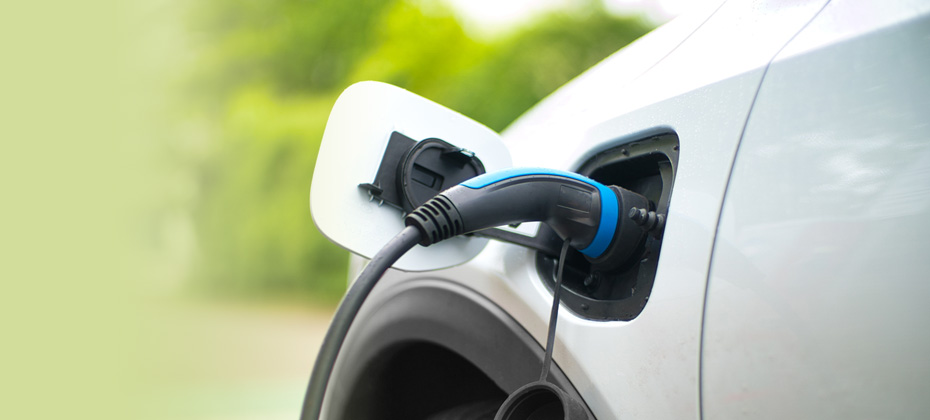
Automotive Blog
Welcome to the Experian Automotive Blog. Keep current on best practices and trending topics for the Auto industry.

We are thrilled to introduce a new quarterly series, Automotive Consumer Trends & Analysis. For years, Experian has been delivering automotive insights in our State of the Automotive Finance Market and Automotive Market and Registration Trends quarterly presentations. We are now bringing similar insights and analyses to the automotive consumer market. At Experian, we understand that marketers need to have a deep understanding of consumers in order to develop targeted, effective marketing strategies. Whether you are an OEM marketer, an agency or large dealer group our presentations will transform complex market data into actionable insights that you can begin using immediately. Learn more about vehicle segments and consumers Would you like to understand which people are buying what vehicles with a clear view of what these consumers look like? The Automotive Consumer Trends & Analysis presentations will provide updated quarterly insights on specific vehicle segments and the associated consumers within that segment. We’ll answer questions like: How many vehicles are on the road? Where are they located? How have recent registrations shifted the geographic distribution? Which manufacturers are selling those vehicles? Who is taking market share from whom? Who are the consumers who registered those vehicles? What are the demographic and psychographic insights for those consumers? We’ll also cover industry news and provide a special market analysis Inaugural Presentation! Release Date: June 23rd Segment: Crossover Utility Vehicles (CUV) You’ll leave the presentation with insights you need to make more strategic marketing decisions and better connect with consumers. Register now for the Automotive Consumer Trends & Analysis quarterly series. Once you register, you’ll receive an email when the presentation has been released.

Today’s OEM marketers, agencies and large dealer groups are under tremendous pressure to connect with consumers across multiple marketing channels. Finding a wide variety of relevant audiences is critical to campaign success. Because May is National Hamburger Month (yep, it’s a real thing), I will compare building the perfect burger to building the ideal automotive audience. Here we go. First, imagine your favorite burger joint (or gourmet burger eatery). You start by opening the menu and likely seeing some of the house “standards.” These are the traditional favorites available “off the menu” with little fuss. Burger with American cheese, Burger with lettuce, onion and tomato. Easy peasy. These types of offerings are similar to what we call our Syndicated audiences. Experian has more than 600 syndicated audiences that are readily available and on the shelf of most trusted platforms. More Choices and Options After that, things get interesting with lots of options to make your burger exactly how you want it. Do you want beef, veggie, portobello mushroom or maybe even bison as your “burger” choice? Cheese? Sure, but what kind? American, cheddar, swiss, blue, pepper jack? And what about toppings? Fried onion strings, raw, cooked? Mushrooms? Jalapenos? Ketchup, mustard, hot sauce, chipotle? Don’t even get me started about your bun choices! You see where I am going with this. With Experian’s Audiences, we have four more levels after our Syndicated Audiences that can help you create the targeted audiences you need based on your specific strategy. From Syndicated to Premium to Custom: Build the Perfect Audience For example, do you need to target in-market customers for a new or used vehicle? Equity positioning? End of term? Alternate fuels? A specific make and/or model? Do you need to target consumers by a particular price range? We can also build custom audiences based on your first-party data coupled with our data resources to help with vehicle launches, services campaigns and any unique audience need you have. We don’t expect you to understand all of this in a short blog, so we’ve written a complimentary resource, Automotive Audience Choices are Key to Ever-Changing Strategies, explaining each of the five categories of audiences. Download it to learn how to build the perfect burger—I mean audience. By the way, as a Midwestern girl, my favorite burger is a traditional cheeseburger with all the fixins—so bring on the sharp cheddar, lettuce, tomatoes, pickles and fried onions. What’s yours? Feel free to email me about burgers or audiences! Audiences is part of the Experian Marketing Engine marketing solution that helps automotive marketers, manufacturers, advertisers, agencies, and platforms identify the right audience, uncover the most appropriate communication channels, develop messages that resonate, and measure the effectiveness of marketing activities.

With used vehicle sales up 13% from 2020 to 2021, and auction volumes at historic lows, obtaining vehicles directly from consumers offers an opportunity for dealers to maintain a profitable sales pipeline. The key for dealers is to understand how their sales stack up against other local dealers — and more specifically, what types of vehicles those competitive dealers are selling. Dealers should take advantage of market visibility Experian’s marketing solution, the Automotive Intelligence Engine (AIE), offers dealers market visibility of pre-owned sales trends and recommends marketing strategies to help acquire used vehicle inventory. AIE provides specific strategies to help dealers acquire the most desired units and reach/resonate with consumers who are most likely to bring those units in on trade. Dealers can view: Who owns desirable vehicles the dealer would like to purchase Strategies to acquire and sell used units Sales trends such as segment, class, model, make and model Financing trends such as credit score, term, and lender Audience makeup: demographic and psychographic characteristics, who owns what type of vehicle, and where they live. By understanding the used owner, dealers can use messaging that resonates to help upsell them into a newer vehicle they desire—helping dealers stay competitive in today’s market. Dealers should also look at lending trends Exploring the world of used vehicle sales should also extend into lending trends. Since used vehicles are not included in OEM lending incentives, understanding trends helps dealers make more informed decisions. Used vehicles can qualify for special OEM sponsored CPO financing. With AIE, dealers have visibility into the amount financeable percentages, APR trends, terms, and tiers for lenders within their market. This benefits dealers to know which lenders are covering more significant percentages like 140% of NADA and what lenders are covering lower credit tiers. Knowing options on the lending side of the transaction empowers dealers to expand their financing options to work with lenders who facilitate lower credit scores or cover higher percentages. Learn how Experian’s Automotive Intelligence Engine can help you make more informed decisions about used car inventory acquisition. You may also be interested in reading more about audience segmentation and AIE in our blog, Data-Driven Audience Segmentation Empowers More Effective Omnichannel Marketing. 1US Used Car Market Finishes Strong in 2021: What's Up for 2022? | Nasdaq

As I reflect on the past two years and think about how the pandemic impacted the automotive industry, I realized that although it was a crazy ride, I believe there was a silver lining – at least for marketers at OEMs, agencies, and large dealer groups, who are tasked with advertising to consumers. I’ll explain more in a minute. First, let’s very briefly recap some trends we’ve recently experienced: Auto dealerships shut down showrooms to in-person shoppers Chip shortages paralyzed new vehicle manufacturing (and are ongoing) Shoppers rapidly shifted to online car shopping (and buying) Pre-owned vehicle sales went through the roof (and remain high) Streaming services went wild, and consumers continue to devour content Marketers shifted focus to more digital marketing to meet consumer demand So, the silver lining? Auto marketers certainly had to take a crash course in the new consumer buying journey. One result was an appreciation for the complexities of digital experiences and a new understanding of unique consumer behaviors and preferences. Here are a few things marketers learned: Consumers want to feel connected to their preferred brand(s) They want to be in charge of their shopping and buying journey Consumers want transparency and honesty from their brand (and dealer) They want the information they are looking for to be both instantly available and on their preferred devices Consumers want time to make a decision Before the pandemic, research revealed that about 88% of prospective car buyers researched options online before stepping into a dealership, and 60% of shoppers spent six or more months on their search, with up to 24 marketing touchpoints along the way.1 So, how do marketers ensure their advertising appears, front and center, for all these touchpoints? Today, the challenge for auto marketers is to stay on top of the consumer’s needs and be there when they are “looking or hearing” their message. This includes creating relevant messages across all media, including social, email, text, web, direct mail, Connected TV, linear, and Addressable TV channels. And don’t forget, consumers have multiple devices now, so it’s even harder for your message to “find them.” During their auto buying journey, consumers are a moving target! To succeed in today’s new world, auto marketers need to rely heavily on data insights that enable them to send targeted, relevant messages exactly where the consumer wants them. Is this even possible? In a word, yes. We’ve published a resource for auto marketers To help marketers stay on top of the latest data science trends and the insights this data produces, we’ve written, Using Data Insights to Drive Measurable OEM Marketing Strategies. We discuss the new consumer buying journey, the explosion of personal devices, the latest in data-driven insights, the increase in media channels, and how to best target, activate, and measure marketing campaigns while optimizing spend. We cover five areas that we believe auto marketers need to focus on to be successful: Identity: Learn the importance of linking fragmented data across channels, platforms, and devices to build unified customer profiles that enable a multi-channel customer experience. Insights: Understand how applying data insights can help make more strategic and effective marketing decisions regarding your audiences, channels, messaging, and goals. Audiences: Read about the value of leveraging automotive, predictive, and lifestyle data to build precisely segmented audiences for every marketing campaign. Activation: Learn how you can leverage our relationship with more than 100 media partners and digital platforms to launch and optimize your marketing campaigns across all channels. Measurement: Read about the importance of accurate measurement and determining the ROI of your online and offline campaigns to gain actionable insights for future campaigns. Get started by reading a complimentary copy of Using Data Insights to Drive Measurable OEM Marketing Strategies. Learn more about Experian's OEM marketing solutions. https://www.forbes.com/sites/forbescommunicationscouncil/2020/09/10/why-automotive-marketing-is-changing-and-how-to-meet-the-demand/?sh=16d583c9a3dd

We’ve listened to user requests and created a mobile app that offers a quick and simple way to scan (or enter) a VIN to view AutoCheck Vehicle History Reports (VHRs)! Along with our recently launched AutoCheck Member site, the mobile app continues our efforts to make information and insights easy to access. With AutoCheck VHRs, you can: • Better manage risk and confidently buy and sell the right vehicles • Make more strategic decisions when stocking the right inventory • Have the right combination of information and insights to more strategically market to consumers With the new mobile app and re-designed member site, AutoCheck makes staying informed easier than ever by putting AutoCheck at your fingertips on your mobile device. Leave your notepad on your desk when appraising a trade, and simply scan a VIN to view the VHR instantly. How to get started The AutoCheck mobile app is available for AutoCheck members using Android or Apple phones/tablets. Simply download the app to see how easy it is to access vehicle history reports. Quickly use the app during trade appraisals to pull a VHR on the spot! You can also use the app to quickly scan a VIN, eliminating the possibility of incorrectly “typing” in the wrong VIN. The full VHR is optimized to be easy to read on your mobile device, giving you all the necessary information to make a good acquisition decision. The AutoCheck mobile app also offers members access to a report history to quickly review past vehicle reports you have run. Did you know? AutoCheck has data from over 95% of U.S. auction houses with 99.82% manufacturer coverage of open recall data for vehicles on the road Experian aggregates and analyzes tens of thousands of distinct accident sources; many provided only to AutoCheck We’re the only VHR provider integrated on all the top consumer vehicle shopping sites In this short video, you will see sample mobile and tablet screens including how to enter or scan a VIN, view a Vehicle History Report, and learn how to see recently run VHRs. How AutoCheck can help improve your business You may also be interested in learning how AutoCheck VHRs can improve your business by reading Vehicle Detail Pages with a Free VHR Have Higher Lead and Sale Conversion Rates or how we helped a large insurance company better manage risk in our case study, LexisNexis Helps Manage Risk for National Insurance Company. For dealers interested in learning more about the benefits of becoming an AutoCheck subscriber, contact us today!

Easily access an Open Recall Report for all your listed inventory whenever you need it and as often as you like. Run the report in real-time to learn which of your units have an open recall and what that recall information is: the recall date, the recall detail, and the recall.

The State of the Automotive Finance Market: Q4 2021 report broke down alternative fuel financing trends—specifically how electric vehicle (EV) financing doubled year-over-year.

We recently collaborated with our integration partner, TrueCar, to analyze vehicle history data's impact on online listings. We analyzed millions of records over months of data and matched online listings to DMS sales to confirm closing rates. The short story – dealership Vehicle Detail Pages (VDPs) on TrueCar.com that offer consumers a Free Experian AutoCheck vehicle history report had a higher lead conversion rate. We expected the data to confirm that VDPs with a Free VHR would have a higher lead conversion rate. However, we uncovered additional insights that even surprised us! The most common search filter Consumers value transparency from a dealership and expect to be informed if a vehicle they are looking at has been in an accident. We learned from the study that when consumers used vehicle history data to filter their user's search results, the “accident” filter was the most common vehicle history data filter used. More than one-third of consumers using vehicle history data to filter search results use “accident” as a filter criterion. Why is this important? There are over 280 million vehicles in operation, and four out of ten of those vehicles have been in an accident. That means more than 100 million vehicles on the road have been in an accident—and 20% of vehicles on the road have had multiple events. Higher conversion rates (with a twist) Having been in the automotive data and analytics space for years, we were not surprised that the analysis continued to support our previous research that vehicle detail pages with a free vehicle history report have a higher lead conversation rate! Things started to get even more interesting, though: VDPs with a free AutoCheck VHR converted at a 27% higher rate. That holds true if the VDP page had a Free AutoCheck report available to the consumer, but if the consumer clicked on the free AutoCheck vehicle history report to view the details of the information, the lead conversion rate jumped to 318% (no, that’s not a typo). The lead conversion rate increased to 318% if the consumer viewed the AutoCheck vehicle history report! VDP sale conversion rates And while we all appreciate a good lead conversion success story, we also wanted to analyze sale conversion rates. We learned that TrueCar VDPs that offered consumers a Free AutoCheck vehicle history report on behalf of a dealership had a higher sales conversion rate. Not only is the rate higher—the sale conversion rate is 50% higher for VDPs that offer a free VHR. Here are a few more interesting pieces of information we uncovered with this latest analysis: VDP’S without an accident close at about 200% higher than those with an accident Vehicles without frame damage had a 250% greater close rate Vehicles without a salvage indicator had a 634% greater close rate Consumers want to make informed decisions when purchasing vehicles, and automotive dealerships can help by providing them with a free AutoCheck Vehicle History Report on every Vehicle Detail Page. Help improve lead conversation rates, sale conversation rates, and build customer trust by offering vehicle history transparency. For dealers with an AutoCheck subscription, you can activate your vehicle listings for free on TrueCar by calling AutoCheck Customer Service at 1 888 409 2204. Dealers interested in learning more about the benefits of becoming an AutoCheck subscriber, contact us today!

The automotive marketing world has benefited from cookie-based information to help identify and reach consumers in the market for a vehicle. Now that cookies will be going away, marketers need to find alternate ways to find in-market consumers. Let’s explore. What are cookies? Created to personalize internet browsing experiences, cookies are small pieces of code placed within a user’s browser whenever someone visits a specific website. Cookies typically track the website’s name and a generated unique user ID. They can capture page clicks, viewed web pages, clicks within a website, and Personally Identifiable Information (PII) such as an address, name, and device IDs. How are cookies used in marketing? Cookie data helps automotive marketers enhance the user experience by better understanding consumer behaviors to deliver targeted, relevant messaging that moves the consumer through the buying funnel. For example, think about when a consumer researches RVs/travel trailers to see if their current vehicle can handle towing a camper or when they search for the best way to hook up a camper. A dealer could use this cookie data to send advertisements for trucks with a towing package that could potentially tow a trailer. Cookie support is ending, so now what? In 2020, Google announced it would end support for cookies in the Chrome browser by early 2022. This timeline was established to allow Google to address the needs of users, publishers, and advertisers to respond and look for workarounds. The revised timeline puts Google’s cookie retirement in 2023. Marketers have been using cookie data in advertising for years, so what are the options when cookie data goes away? Cookie alternatives Automotive marketers can tackle a cookie-less world by using other sources of consumer data insights. For instance, a third-party data aggregator, like Experian, has access to numerous sources, platforms, and websites. Beyond that, we have access to a vast range of specific consumer data insights, including vehicle ownership, registrations, vehicle history data, and lending data. We take all that information and help marketers segment audiences and predict what consumers will do next. (That’s more than the average cookie!) Sample audience segment information: Consumers in market Loan status In positive equity Driving a specific year/make/model 1000+ lifestyle events such as new baby, marriage, new home Geography, demographics, psychographics To take it to the next level, we can use predictive analytics to go beyond what cookie data could provide by predicting who is ready to purchase a vehicle. In our example above, a marketer used cookie data to find buyers who had shown interest in a tow package, but that’s where it ended. By combining audience segmentation with a predictive model, marketers can target and identify consumers in-market and most likely ready to purchase a vehicle with a tow package. In this way, the data-driven insights from a third-party data provider specializing in automotive insights can replace the cookie-driven approach and take it a significant step beyond. Other ways to reach consumers in a cookie-less world Automotive marketers can also use data-driven insights to further explore specific channels where consumers spend their time. Social media, for example, is an effective channel to reach consumers. Marketers can go beyond standard Facebook audiences by utilizing Experian audience segmentation and predictive analytics to highly target consumers on Facebook. So, if you can predict when a consumer will be in-market, and you know in what channel they spend most of their time, you can target them with specific messages about your dealership and your vehicles. With cookies becoming a tool of the past, knowing who is likely to be in-market, what message resonates with them, and the best channel to use allows marketers to move beyond cookie-based strategies effectively. So, let the cookie crumble! For a deeper dive into cookies, watch this recorded webinar from the 2021 Digital Marketing Strategies conference: As the Cookies Crumble, How Will Automotive Digital Marketing Respond? Presented by Experian's Amy Hughes, Sr. Director of Dealer Intelligence. Learn more about Experian’s Automotive Intelligence Engine and how audience segmentation and predictive analytics can drive more in-market buyers to your dealership.

At Experian, we like to share success stories with automotive professionals—especially when it relates to one of our solutions—AutoCheck! Below is a case study involving our client, LexisNexis. We discuss how they were able to help their customer, a large national insurance company utilize AutoCheck vehicle history data to help manage risk and ensure more accurate underwriting. The challenge: LexisNexis Risk Solutions is a leader in providing essential information to help customers assess, predict, and manage risk. So, when a national insurance client asked them to evaluate the automotive mileage data model they were currently using for their underwriting, LexisNexis was happy to help. The client wanted to make sure they were analyzing the most accurate, up-to-date mileage data available. They wanted to make sure they were best managing risk, while continuing to offer competitive rates and a high level of customer service to their prospects and client base. The approach: First, the LexisNexis team set out to validate the frequency of recent VIN-level mileage data being populated into the current mileage model. They prepared a data analysis for their client, comparing length of ownership to the age of the oldest reported odometer reading based on AutoCheck vehicle history data. Second, they reviewed the frequency of current AutoCheck mileage data records and compared that data to AutoCheck vehicle history records. They wanted to determine if there were more mileage records being reported currently versus in the past. The LexisNexis team analyzed a large sample of VIN records with impressive results. The solution and outcome: When the team compared data from mid-2020 to that from late 2021, the analysis confirmed there were more VINs populated with mileage records with the data pulled from late 2021. Specifically, 45% of VINs had mileage records from within the last three years that did not previously have a mileage record within that time frame. The national insurance company was thrilled with the lift in mileage data year over year! In summary, because AutoCheck vehicle history data is constantly enhanced and expanded, we can provide reliable, accurate data to industry leaders like LexisNexis so they can offer the best insights to their client relationships. Recent mileage data is a critical component to use when evaluating a vehicle’s history. Experian Automotive is committed to continuously expanding our AutoCheck vehicle history data overall, including the frequency and recency of reported mileage information. AutoCheck is the industrial-strength vehicle history report that automotive professionals trust to help manage risk and confidently underwrite more of the right vehicles. To learn more about the many benefits of becoming an AutoCheck subscriber contact us today.

It’s that time of year. All my tax documents are rolling in and I know I need to start working on my taxes. Like most Americans, I’m hoping to end up with a refund! In 2020, 170M people filed tax returns and according to the IRS, they issued almost $126M in refunds.¹ Additionally, 2020 surveys revealed that as much as 9 percent of over 100 million taxpayers spent their refunds on major purchases, including new or used cars!2 As a dealer, it’s not uncommon to see an influx of consumers looking to purchase a vehicle around tax refund time. This year, with the continued shortage of new inventory, dealers can look for consumer interest to remain focused on pre-owned vehicles. Take advantage of shoppers by optimizing your online presence Dealers can help buyers by making it easy for them to quickly find vehicle history information on all your online inventory. One of the best ways to do this is by providing an AutoCheck® Vehicle History Report on your Vehicle Detail Pages (VDPs). Be sure to provide this information on all consumer shopping portal sites where you list your inventory. Why is this important? Because seventy-eight percent of consumers visit two or more sites during their shopping journey.3 You need to do everything you can to quickly capture their attention, increase lead conversion and close rates for your inventory. So, why AutoCheck VHRs? Because AutoCheck is the only vehicle history report listed on all the top consumer vehicle shopping portals. Your VHRs are on display where consumers are shopping online. We work with all the top online automotive shopping sites to help dealers like you optimize your online presence. Consumers use VHR information to make purchase decisions Our research shows that consumers increasingly use vehicle history information to narrow their consideration pool and filter search result pages to help make purchasing decisions. This transparency about a vehicle’s history (that could include damage and accident information) is what consumers are seeking. It’s never been easier for dealers to share key vehicle history data to help consumers make an informed decision so they can turn to your dealership to purchase. For dealers that are not yet subscribers, here are a few other things you may not know about AutoCheck vehicle history reports. We do not re-market to shoppers or display competitive units as alternatives on your AutoCheck.com VDP listings. Our goal is to help your dealership sell your inventory. For dealers with an AutoCheck subscription, you can activate your vehicle listings for free on AutoCheck.com by calling client services at 1 888 409 2204. For dealers who are interested in learning more about the benefits of becoming an AutoCheck subscriber contact us today. Happy tax season! 1. https://www.cnbc.com/2021/03/31/will-you-get-a-tax-refund-or-owe-the-irs-32-percent-of-americans-dont-know.html 2. https://santanderconsumerusa.com/blog/do-people-really-buy-new-cars-with-their-tax-refunds 3. Car Buyer whitepaper. https://www.coxautoinc.com/wp-content/uploads/2021/02/Cox-Automotive-Car-Buyer-Journey-Study-Pandemic-Edition-Summary.pdf

While many view Millennials and Gen Z through the same lens, savvy automotive marketers are adjusting their strategies to capture the market of this generation.

We conducted a study of thousands of online listings to better understand what details are crucial for VDPs, which Kirsten Von Busch will be debuting the results of at the NADA Show in March.

Creating a consumer experience where a customer receives a series of relevant and timely content is the goal of omnichannel marketing. OEM marketers work hard to develop effective marketing strategies that create fully integrated shopping experiences for customers. Build loyal relationships with omnichannel marketing Well designed, omnichannel marketing strategies foster a sense of relationship between the vehicle/brand and the consumer that can increase brand and dealership loyalty. Today's OEM marketers understand their customers are “everywhere.” Channels have exploded, especially in the past several years so marketers need to know how to best reach consumers. With multiple apps, websites, social media, email, streaming content, videos and brick-and-mortar dealerships the challenge for marketers is how to pull it all together. Recent research shows that 60% of millennials expect brands to provide consistent experiences across multiple channels and that Gen Z and Millennials are most likely to be “bought” by an effective omnichannel strategy.1 According to Forbes, “companies with the best omnichannel customer engagement strategies turn 89% of buyers into loyal customers. And according to Omnichannel Retail Statistics, companies with weak omnichannel strategies retain only 33% of their customers.”1 It is clear, that implementing an effective omnichannel strategy can result in more sales and increased loyalty. Use data insights to identify and segment audiences When approaching omnichannel marketing, we recommend OEM marketers conduct a detailed analysis, backed by automotive research and data. This analysis will help to accurately identify and segment audiences to deliver targeted, tailored content along the journey. Experian leverages our consumer, lender, and vehicle data along with market insights to facilitate powerful segmentation. As a result, OEM marketers can reach audiences in an effective manner allowing for a more personalized experience. For a deeper dive into segmentation, marketers can gain insights and understanding of key attributes using Experian’s CustomerView data. This data includes demographics, buyer personas, wants and needs, buying patterns, customer behavior, preferences, attitudes, and commonalities. These automotive data insights cover over 310 million U.S. consumers, 126 million households containing 1,500+ individual and household level attributes and 2500+ geographic attributes. This type of segmentation will help you create the right content for the right target group to be delivered at the right time in the right channel. If your message is irrelevant to the customer, or on the wrong channel, you just might lose engagement. Enlist the power of the Experian Marketing Engine™ to facilitate market insights, audience targeting, audience activation and measurement to monitor ongoing success. Learn how the Experian Marketing Engine can help you create audience segments that empower more effective omnichannel marketing today. 116 Proven Omnichannel Statistics That Will Boost Your Sales in 2021 (savemycent.com)

According to Experian’s State of Automotive Finance Market: Q3 2021 report, leasing comprised 24.03% of new vehicle financing in Q3 2021.